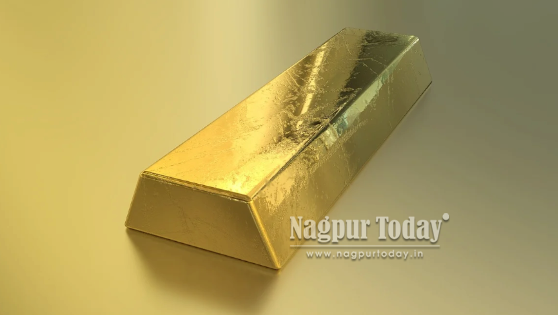 Gold continues to play a central role in Indian investing habits. But in 2025, it’s no longer just about buying jewellery during festivals or holding physical bars as a long-term hedge. The market is evolving, and so is how people think about gold.
Gold continues to play a central role in Indian investing habits. But in 2025, it’s no longer just about buying jewellery during festivals or holding physical bars as a long-term hedge. The market is evolving, and so is how people think about gold.
Prices have shifted sharply over the past year, and the reasons go well beyond traditional demand. For Indian investors navigating rising interest rates, rupee volatility, and global economic uncertainty, gold is acting like a live market, not just a passive store of value. That means it’s becoming just as relevant to short-term traders as it is to long-term holders.
Whether you’re investing directly, using ETFs, or exploring derivatives, understanding what’s behind gold’s latest movements can help you decide how to position.
What’s Been Driving Gold Prices in 2025?
Gold prices climbed steadily through late 2024 and have remained elevated into 2025. The metal pushed above key resistance levels more than once, responding to a mix of macroeconomic shifts and market sentiment.
Some of the key forces behind this rise include:
Interest rate cuts in major economies, which reduce bond yields and make gold more attractive
Persistent inflation, keeping investor demand for inflation-hedging assets strong
Geopolitical tensions that push investors toward safe-haven assets
But it’s not just global headlines. Domestic factors are also in play. The value of the rupee, local demand patterns, and changing investor behaviour are all influencing what happens next.
Why Indian Investors Pay Closer Attention Now
India’s relationship with gold is deep-rooted, but how people interact with it is changing. More investors are looking beyond traditional buying and starting to think about gold as a tradeable asset.
Here’s why:
1. Rupee Weakness Boosts Local Prices
Even if the global gold price remains flat, a weaker rupee can make imported gold more expensive. That’s especially relevant in a country that imports the vast majority of its gold. Traders are now watching USD/INR just as closely as global gold charts.
2. Changing Tax Policies
Shifts in import duties, GST rates, or local levies affect gold pricing in India more than in most other countries. A tax change can quickly alter retail demand or impact premiums on physical gold.
3. Rise of Digital Access
Platforms now let Indian investors buy gold in small units, trade gold-linked derivatives, or invest in gold ETFs. That’s broadened gold’s appeal to younger, tech-savvy investors who want market exposure without storage costs.
Should You React to Short-Term Price Swings?
That depends on your approach. If you’re a long-term buyer who adds gold gradually, short-term volatility might not matter much. But for traders or investors looking for opportunities, recent trends present a chance to time entries more effectively.
If you’re exploring ways to trade gold more actively, whether using contracts, spot trading, or derivatives, it’s important to work with a commodities trading broker that offers the flexibility and tools to manage risk and access global pricing. Look for platforms with tight spreads, strong charting tools, and solid market data, especially during high-volatility sessions.
Gold vs. Forex: Where Do Active Traders Focus?
Both gold and forex appeal to traders who want movement, liquidity, and opportunities to act on macro trends. But they behave differently.
Gold
- Responds to risk sentiment and interest rate shifts
- Prone to sharp moves during central bank announcements
- Influenced by demand from central banks, funds, and consumers
Forex
- More responsive to economic data like GDP, inflation, and employment
- Runs 24 hours during the week
- Offers a wide choice of currency pairs, including emerging market crosses
Traders who start with one often explore the other. If you’re interested in currencies and want access to major pairs alongside gold, choosing a forex trading broker with multi-asset access can keep your options open and your strategy streamlined.
Gold’s Role in a Modern Portfolio
For many investors, gold still acts as a hedge against inflation, currency depreciation, or equity volatility. But that doesn’t mean you need to hold only physical gold. Many now choose a blended approach.
Common ways to gain gold exposure
- Physical gold – Secure but illiquid
- ETFs – Easy to trade, ideal for portfolio diversification
- Gold derivatives – Higher risk, but offer leverage and active trading opportunities
- Digital gold platforms – Low-barrier entry and fractional ownership
Whichever route you choose, it’s worth thinking about timing. Buying at the top of a rally often leads to frustration, while accumulating slowly on pullbacks tends to suit longer-term investors better.
Practical Tips for Navigating Current Conditions
Here’s what local investors should keep in mind right now:
Stay Updated on Central Bank Moves
Rate cuts or hikes by the US Fed or RBI affect gold prices directly. Gold tends to rise when rate cuts are expected or even just hinted at.
Watch the USD/INR Pair
If you’re buying gold in rupees, a strong dollar can raise your cost even if international prices stay flat.
Don’t Overreact to Every Spike
Gold often makes large intraday moves, especially during news events. But not every jump or drop signals a trend. Look for follow-through before making major allocation decisions.
Use Simulated Trading to Practise Timing
If you’re looking to fine-tune your gold strategy, try a demo or simulated account. This lets you test how you’d react to real-time price moves, news volatility, and position sizing without risking capital.
Gold Isn’t Static & Neither Are Investors
Gold is no longer just something you gift or store in a locker. It’s a dynamic asset class that reacts to interest rates, currencies, and risk appetite in real time. Local investors who understand this shift and adapt accordingly stand to make better decisions, whether they’re buying for the long term or trading around key events. In a market that moves as fast as this, strategy and timing make all the difference.
FAQs
Is gold still a good long-term investment in 2025?
Yes, but the entry point matters. Investors who view gold as a long-term hedge should still monitor macro shifts and accumulate gradually rather than chase price spikes.
Why is Indian gold more expensive than international gold?
Taxes, import duties, and local premiums all contribute to the higher cost of gold in India compared to global spot prices.
Should I trade gold or hold it?
It depends on your strategy. Traders look for short-term moves using charts and news flow. Long-term holders use gold for stability and wealth preservation.















